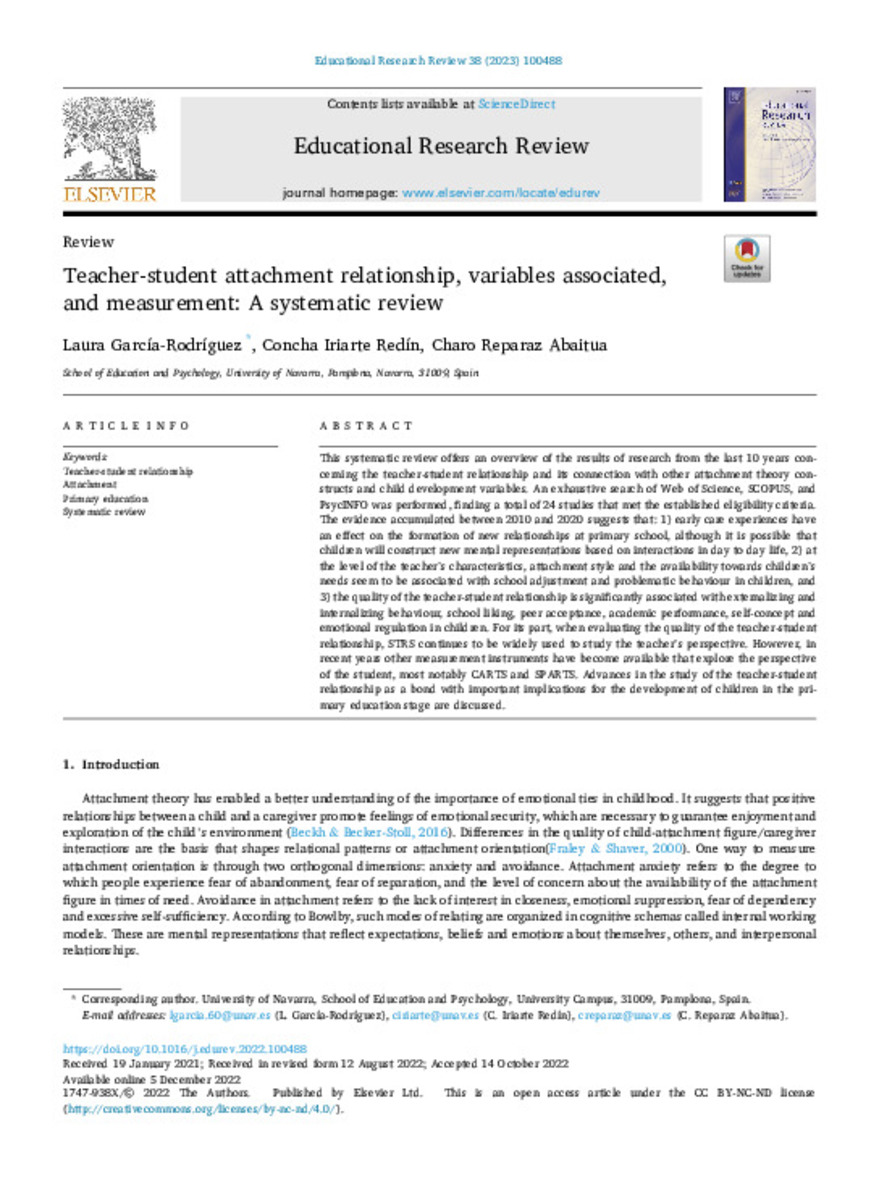Teacher-student attachment relationship, variables associated, and measurement: A systematic review
Keywords:
Teacher-student relationship
Attachment
Primary education
Systematic review
Note:
This is an open access article under the CC BY-NC-ND license
Citation:
García-Rodríguez, L. (Laura); Iriarte-Redín, C. (Concha); Reparaz-Abaitua, C. (Charo). "Teacher-student attachment relationship, variables associated, and measurement: A systematic review". Educational Research Review. 38, 2023, 100488
Statistics and impact
0 citas en

0 citas en

Items in Dadun are protected by copyright, with all rights reserved, unless otherwise indicated.











